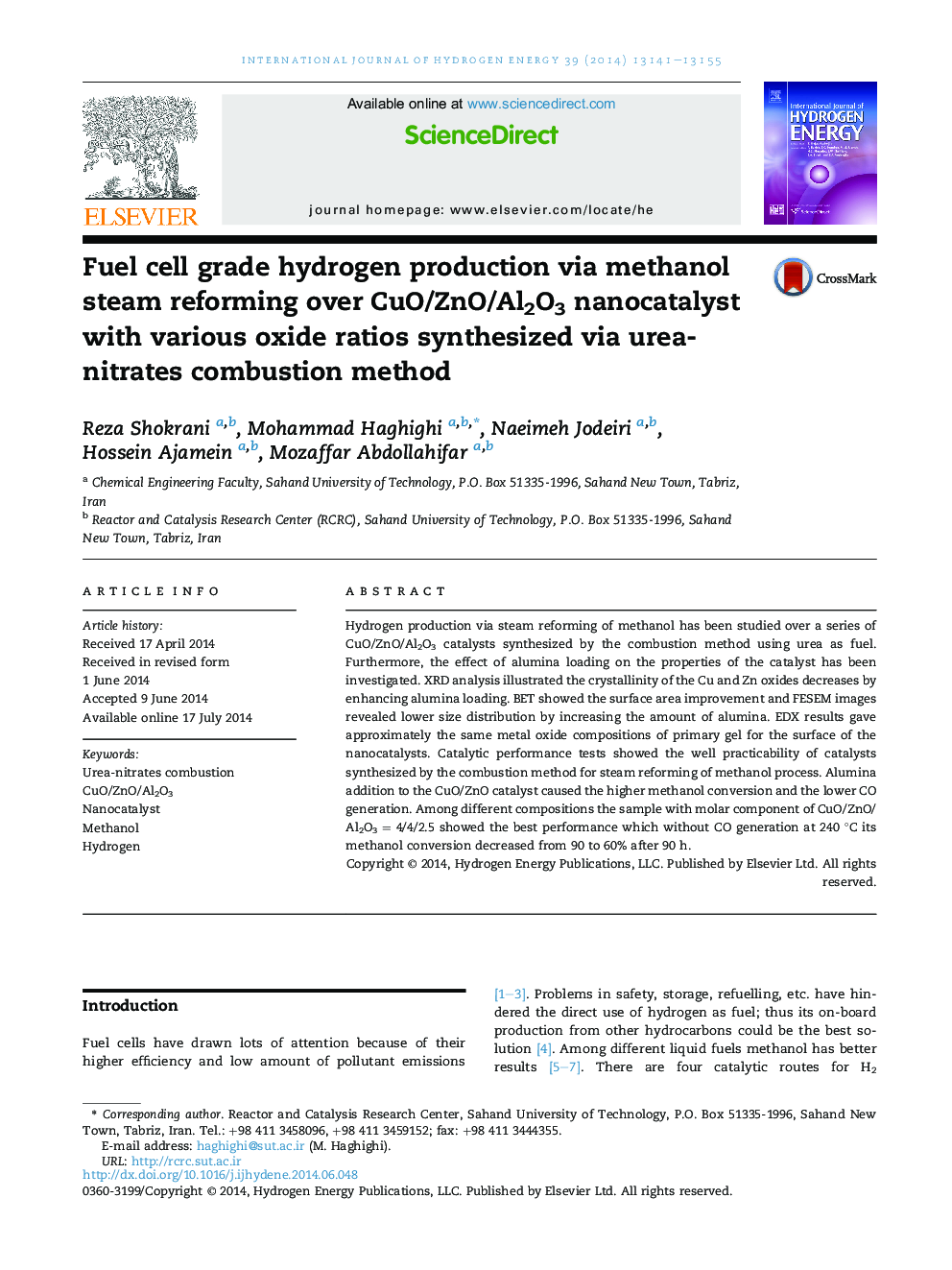| Article ID | Journal | Published Year | Pages | File Type |
|---|---|---|---|---|
| 1272601 | International Journal of Hydrogen Energy | 2014 | 15 Pages |
•Successfully synthesis of CuO/ZnO/Al2O3 nanocatalyst by solution combustion method.•Employing of CuO/ZnO/Al2O3 in H2 production via methanol steam reforming.•Optimum Al loading on properties and performance of CuO/ZnO/Al2O3 nanocatalyst.•Reaction mechanism of methanol steam reforming over CuO/ZnO/Al2O3 nanocatalyst.
Hydrogen production via steam reforming of methanol has been studied over a series of CuO/ZnO/Al2O3 catalysts synthesized by the combustion method using urea as fuel. Furthermore, the effect of alumina loading on the properties of the catalyst has been investigated. XRD analysis illustrated the crystallinity of the Cu and Zn oxides decreases by enhancing alumina loading. BET showed the surface area improvement and FESEM images revealed lower size distribution by increasing the amount of alumina. EDX results gave approximately the same metal oxide compositions of primary gel for the surface of the nanocatalysts. Catalytic performance tests showed the well practicability of catalysts synthesized by the combustion method for steam reforming of methanol process. Alumina addition to the CuO/ZnO catalyst caused the higher methanol conversion and the lower CO generation. Among different compositions the sample with molar component of CuO/ZnO/Al2O3 = 4/4/2.5 showed the best performance which without CO generation at 240 °C its methanol conversion decreased from 90 to 60% after 90 h.
Graphical abstractCuO/ZnO/Al2O3 nanocatalyst with various alumina loadings was synthesized by urea-nitrate combustion method. The samples were prepared to investigate the effect of increasing of Al content on the physicochemical properties and catalytic performance of the nanocatalysts on steam reforming of methanol. The samples were analysed by different characterization techniques such as XRD, FESEM, PSD, BET, EDX and FTIR. The results confirmed that addition of Al2O3 in structure of CuO/ZnO/Al2O3 nanopowders increases the specific surface area, but decreases the crystinallity. Catalytic performance tests revealed that alumina addition to CuO/ZnO catalyst improves both the methanol conversion and low CO production. Further addition of Al loading resulted in lower conversion of methanol and more CO generation.Figure optionsDownload full-size imageDownload as PowerPoint slide
